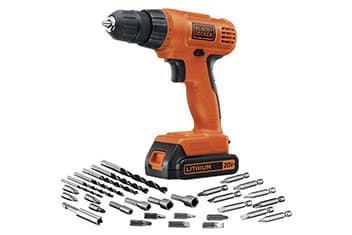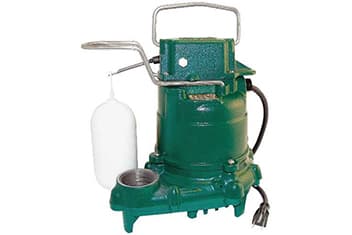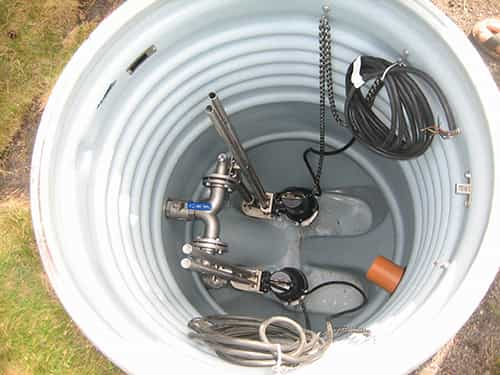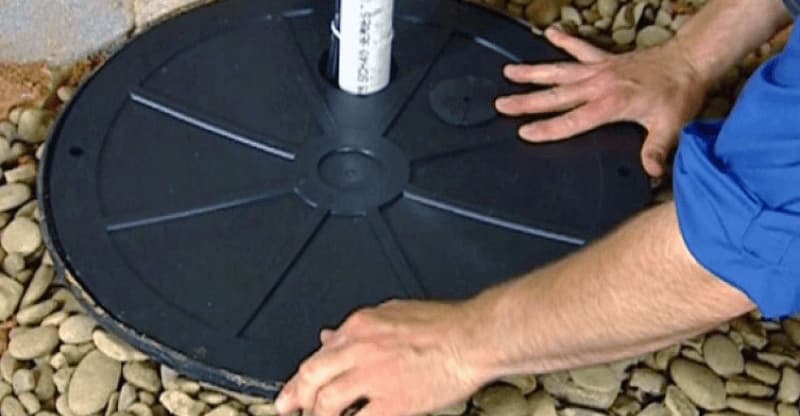
Installing a sump pump but not sure what a Weep Hole (aka a relief hole) is – or where to install it? Our team of basement waterproofing experts put together a guide to help you drill your Weep Hole and avoid air lock!
A sump pump weep hole may not sound important thanks to their silly sounding name but air locked pumps can mean a flooded basement and costly repairs. Pumps air lock and think they are pumping water when really they are only pushing air out the discharge pipe.
In this article we will teach you everything you need to know about Sump Pump Weep Holes:
Weep Hole Installation Guide
Installing a Weep Hole on your pump system may sound confusing but it is actually easier than it sounds. If you paid a professional installer to dig and install your system they should have drilled the relief hole but you should always double check.

Drilling a weep hole is easy with the right equipment. Most piping can be drilled with a normal power drill like the BLACK+DECKER 20V Drill. Make sure to take your time and drill on a flat surface.
Step by Step Installation
- Remove your pump from the pit – Start by taking your pump out of the pit and disconnecting it from the drain lines
- Prepare drill – Find a 3/16″ drill bit and power drill
- Drill a Hole – Drill a 3/16″ downward at a 45 degree angle between the discharge line and check valve
- Reinstall pump – Reinstall your pump and reattach the discharge lines and power cord
- Test system – Test your pump system and weep hole by filling your basin with a few buckets of water
Preventing Air Lock
You may be shocked to see water going back into the pit while the pump is running but it is a necessary evil! This small loss in pump efficiency extends the life of your pump and stops air locks.
Air locks are one of the most common causes of a sump pump problem. Fortunately, there are a few easy ways to prevent an airlock in your basement sump pump so you can prevent a disabled sump pump during the next flood.
What Is An Air Lock?
First, let’s establish what is an airlock. Air locked sump pumps occur when air flows back into the pump chamber, filling the pump with air rather than taking in water from the sump basin. The air that is ‘locked’ inside the motor prevents water from being pumped out of the sump basin.
Preventing Air Lock with Weep Holes
Weep hole might sound like a funny word but they are the best way to prevent an air-locked pump. Some models come with a weep hole predrilled but many models from top brands will require you to drill your own while installing the pump.
Drilling a hole in your brand new sump pump might seem silly and like an easy way to ruin your new investment but if you check the owner’s manual most models will recommend drilling a weep hole just above the waterline. Not sure how to drill a weep hole – check out the full weep hole installation guide.
Where to Drill a Weep Hole
Your Weep Hole should be drilled between the discharge and check valve. The hole should be drilled downward at a 45 degree angle, pointing away from your pump but inside your pump pit.
Make sure to disconnect your pump from the lines and place it in a place that is easy to drill.
Above or Below the Water Line?
A Weep Hole should be installed below the water line. This will allow hole to prevent air bubbles from entering the impeller chamber and causing an air lock.
If your Weep Hole is installed above the water line there is a chance that air can enter the impeller chamber, causing an air lock.
How Large is a Weep Hole?
Weep holes should be a 3/16” hole – any larger or smaller and the hole will not be effective. The best way to drill a hole is with a power drill so you can quickly (and safely) drill a straight hole.
3/16” is the magic number for weep holes – any larger and the hole will not be as effective in preventing airlocks.
Why do Sump Pumps Need Weep Holes?
Sump pumps need Weep Holes (relief holes) in order to prevent air locking the impeller chamber. This is important because it allows air to bleed out of the interior of the pump that would normally keep the next cycles from starting.
As an added benefit drilling a relief hole extends the life of most pumps and is even recommended by manufactures like Zoeller. Are weep holes 100% necessary? No, but why shorten the life of your pump!
Air Locked Zoeller Pumps

Zoeller makes some of the best sump pump on the market, but they can still experience airlock. Pumps like the M53 Mighty Mate are highly unlikely to experience air-locking once a weep hole is installed so you don’t have to worry about a wet basement.
FAQ
Do you need a weep hole in sump pump?
Some models of sump pumps do not require a weep hole but many of the most popular models need a weep hole to prevent air lock.
Where should the weep hole be on a sump pump?
Different water pumps need weep holes in different locations. The most common spots is below the water line but check your owners manual.
Why does a sump pump need a weep hole?
Sump pumps need weep drilled into the drain pipe in order to prevent air lock.
Related Posts
Stopping Sump Pump Dripping Noises and Sounds


